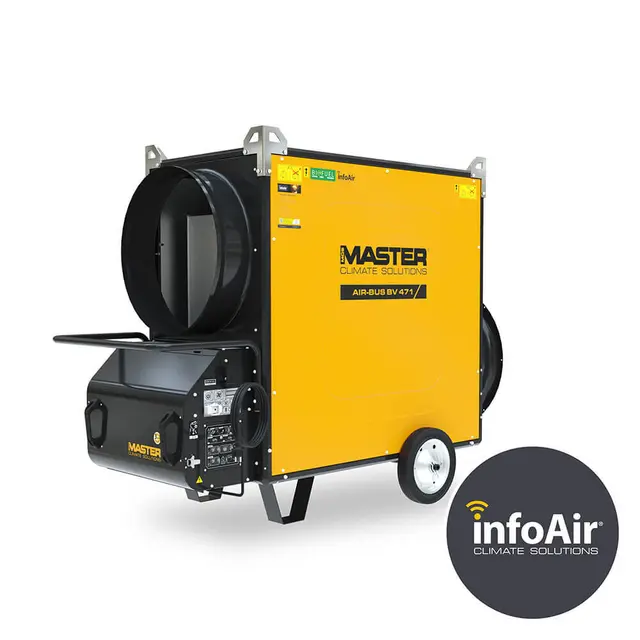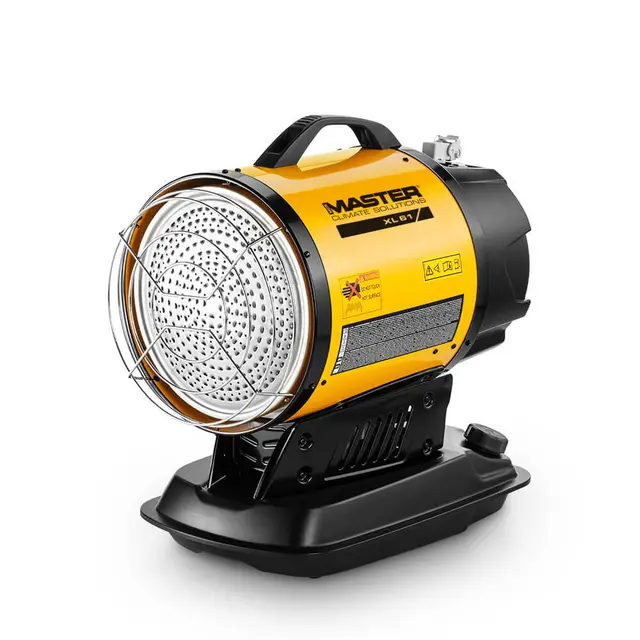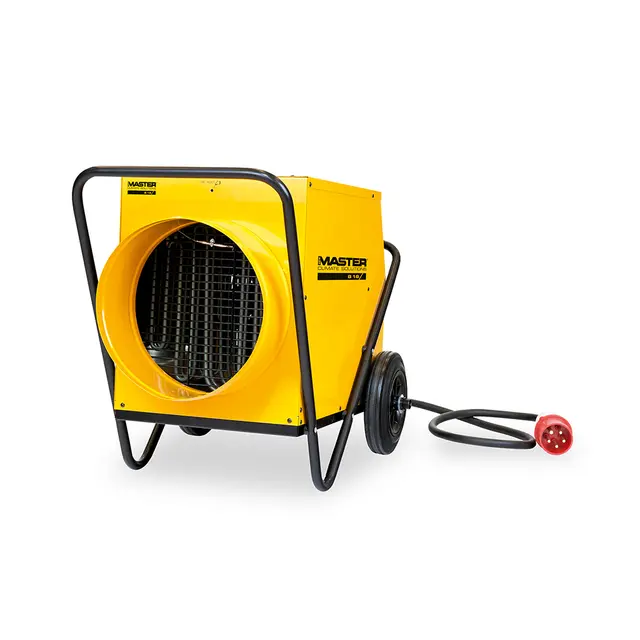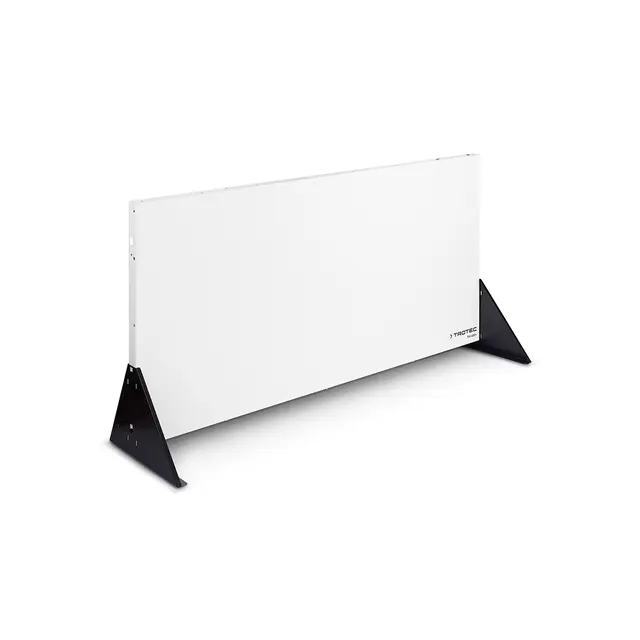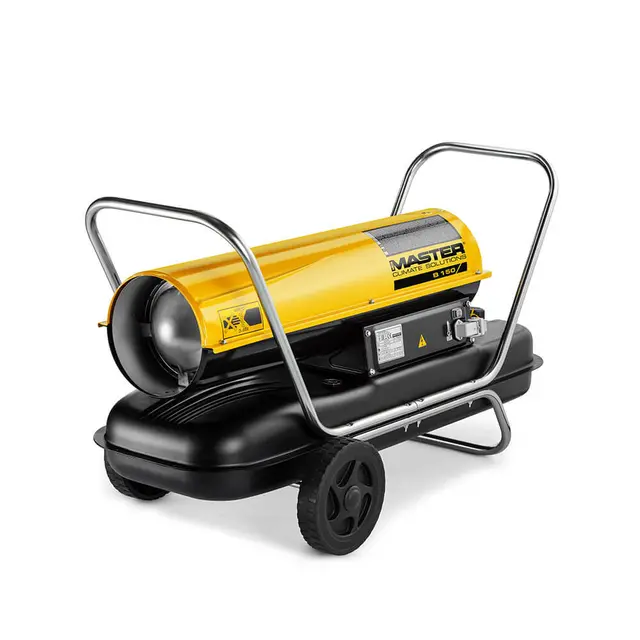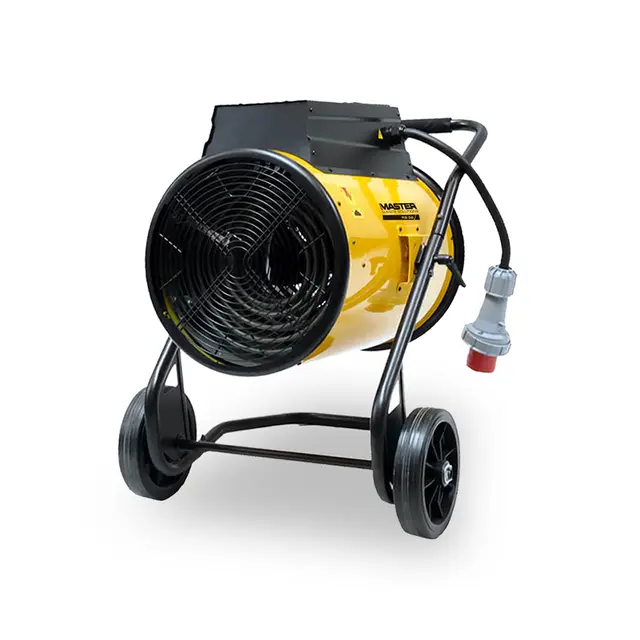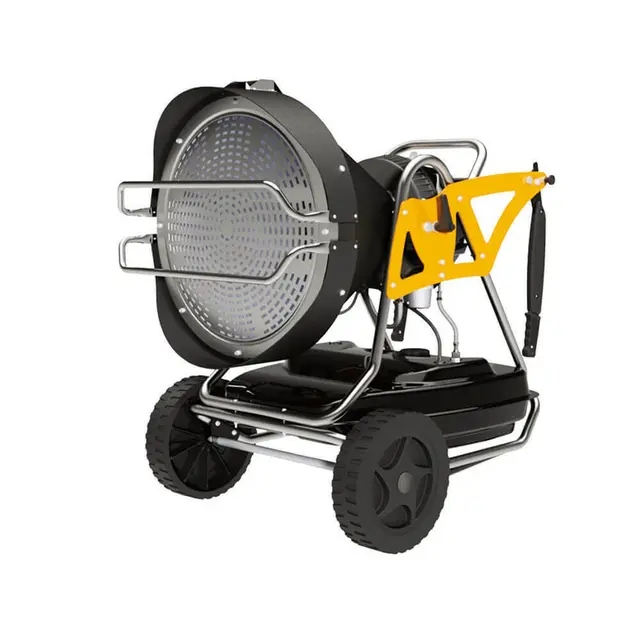How to use heaters on construction sites

Temporary heating solutions are critical to the success of construction projects all year round. However, to create a safe environment with this technology, it’s crucial to carefully select the type of heater and know how to operate it safely.
When cold weather strikes, productivity on construction sites can quickly plummet and put equipment at a greater risk of wearing down and breaking.
As well as creating these unworkable conditions, cold weather can also mean wet building materials, like cement and plaster, take hours or days to dry, potentially preventing further work from being carried out.
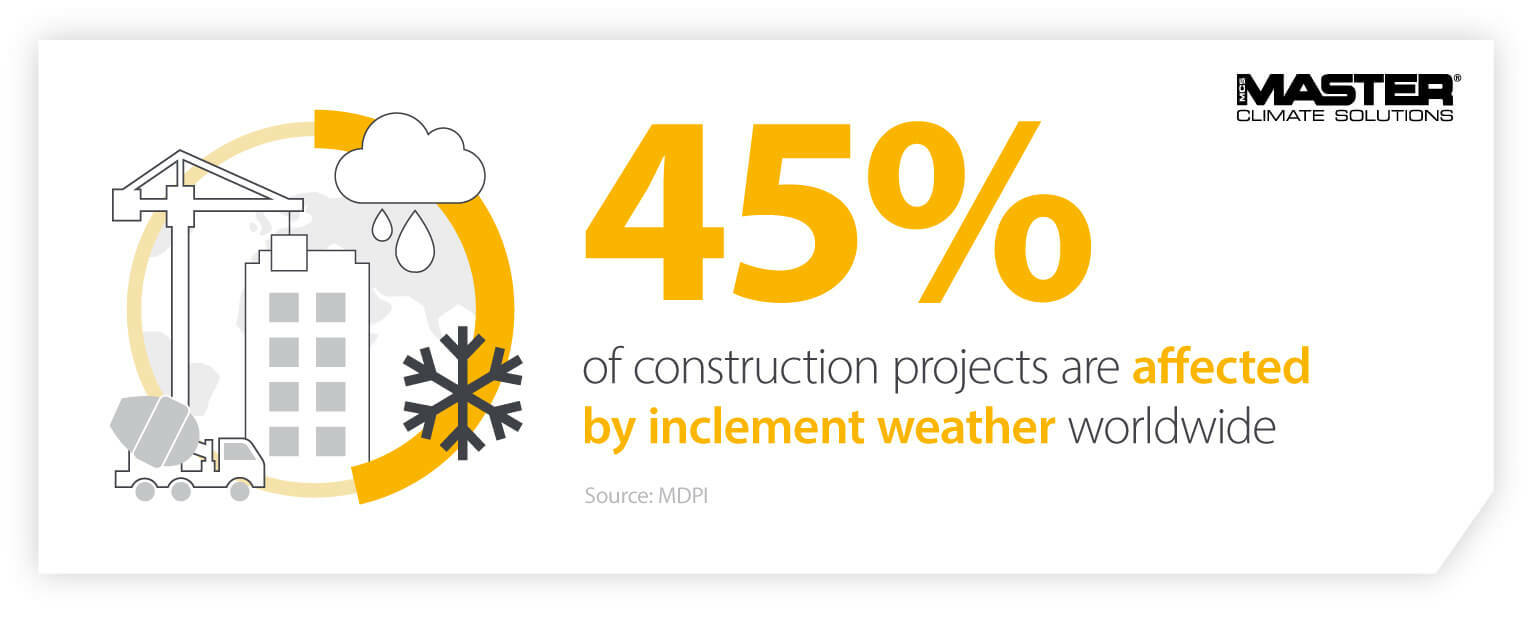
These hurdles do not just cause unwanted delays, but in many cases can send the cost of complex, multi-faceted projects spiralling.
Projects in the construction industry are typically large, complicated jobs with dozens if not hundreds of people working simultaneously. When a single task runs behind schedule, subsequent work has to wait, having a costly knock-on effect on the entire schedule.
In order to keep building sites warm, dry and productive all year round, portable heating units can be brought in to regulate temperature and moisture with a constant flow of warm air throughout the work day.
The different types of construction heaters
While all construction heaters can withstand the unique challenges presented by building sites, there are several different types of units, each of which delivers heat in different ways and excels in separate areas.
Direct-fired heaters
Direct-fired heaters like the B 150 CED and B 360 burn combustible materials to generate large volumes of warm air quickly with a heating capacity from 10kW up to 111kW.
To do this, the flame within the device comes into direct contact with the air. This makes the heat produced highly efficient and powerful – an effective blend of strong performance and reduced running costs.
However, this also means the warm air generated contains pollutants caused by combustion, meaning these heaters are not suitable in environments without good ventilation.
To keep units running continuously in well-ventilated spaces, built-in tanks allow up to 23 hours of non-stop operation.
Indirect-fired heaters
Indirect-fired heaters, such as the BV 290 and BV 400, also harness the power of combustion to produce a significant amount of warm air using a heating capacity of 21kW up to 225kW.
However, instead of using a naked flame to heat the incoming air, these devices house their flame inside a combustion chamber. Because the flame never reacts with the air being pumped out, warm, fume-free air is produced, meaning these units can be applied safely in both indoor and outdoor areas.
In order to keep spaces large and small warm, these heaters are capable of producing an air flow of up to 770Pa, depending on the model. Additionally, these systems also feature integrated tanks that allow a maximum of 21 hours of uninterrupted operation.
Discover the full spectrum of differences between direct and indirect-fired heaters here.
Infrared heaters
Another temporary heating solution to keep workers warm and equipment at the ideal temperature is infrared heaters.
While some use electricity to emit warmth, others such as the XL 61 can use combustible fuels to provide radiant heat quickly. Much like the natural power of the sun, radiant heat does not move air, making it a highly efficient method of delivering heat energy.
Electric heaters
Electric heaters, such as the B 18, are a cleaner, greener alternative to oil-fired heaters. Because these devices do not rely on the use of combustible fuels to generate heat energy, this makes electric heaters ideal for indoor worksites where a three-phase power supply is present.
What also makes these types of construction heaters suitable for use on-site is the capability to attach flexible hoses and push warm air to precise areas of a building. To deliver a suitable stream of heat, this range of Master heaters can feature a heating capacity of up to 40kW.
How to choose the right heater for your worksite
Every construction site is different and will evolve as the project nears completion. Because of this, it is important to consider the heating solutions in use and determine whether they remain fit for purpose.
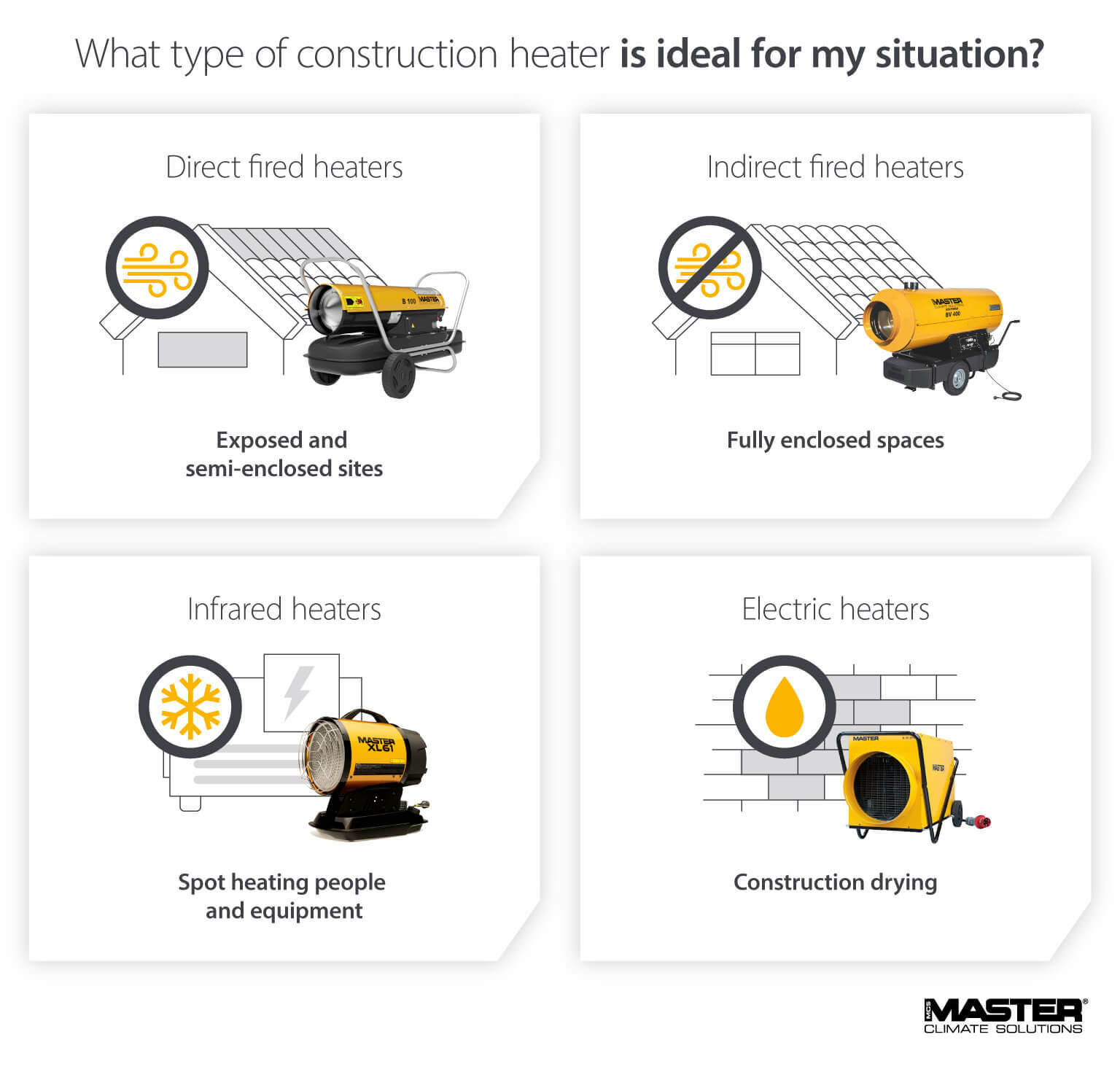
Warming teams in open-air construction sites
Because direct-fired heaters feature a naked flame within the device, the products of combustion are present in the unit’s exhaust. For this reason, direct-fired heaters are only suitable in environments with sufficient ventilation, such as large exposed and semi-enclosed spaces.
Heating people in enclosed spaces
Indirect-fired heaters enclose a flame within a combustion chamber, creating fume-free warm air. As a result, this technology is best suited to interior spaces, such as built rooms and closed-off spaces. With the possibility to connect flexible hoses, warm air can also be ducted across long distances.
Defrosting critical equipment
Infrared heaters do not move air to radiate heat, meaning they can spot heat areas efficiently and effectively. Because of this, infrared technology is best suited to keeping people and equipment, such as generators, warm during colder months.
Drying wet walls indoors
Electric heaters and infrared systems use power to produce and exhaust clean, pollutant-free hot air, quickly and quietly. This makes them ideal for drying wet walls of paint and plaster in smaller, indoor spaces.
What size unit is ideal?
Beyond the type of construction heater, it is also essential to consider the size of the unit itself.
For larger sites, a unit with a greater heating capacity is required, such as the AIR-BUS BV 471. Whatsmore, this device can share its exceptional power and deliver warm air to multiple spaces at the same time by connecting up to four flexible hoses to the device.
For smaller rooms, a unit with a reduced heating capacity is ideal. Not only does this help keep operating costs low, but a less powerful unit can also help prevent materials from becoming too dry and sustaining damage.
Looking beyond the size and type of heater, operators should also bear in mind the power required, the quantity and scale of the rooms that need to be heated, available fuels, the volume of air flow and the electrical connection available.
With so much to consider, the process of finding the ideal construction heater can be a lengthy and tedious one. To help, our Master app houses a number of time-saving tools to make the process of selecting the right solution quick and simple.
Are heating units safe for building site use?
Although construction heating systems are able to withstand the variety of hazards typically found on job sites, these machines must be carefully selected and operated to ensure teams are kept safe and warm indoors and out.
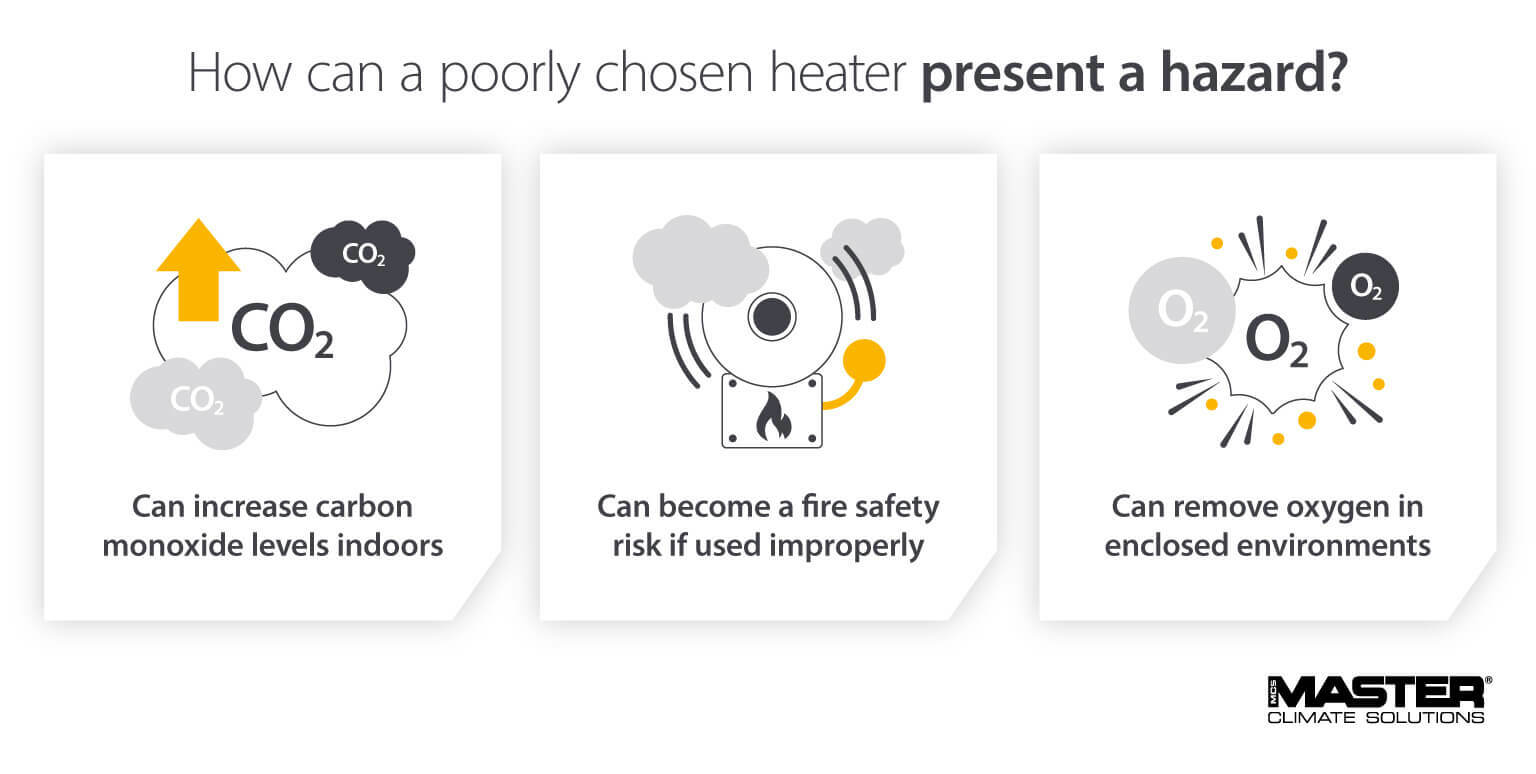
Ways to maximise on-site heater safety
As well as the type and size of the unit, it is crucial to employ a number of precautions across the board when using this technology to minimise the risk to those working on and around your building site.
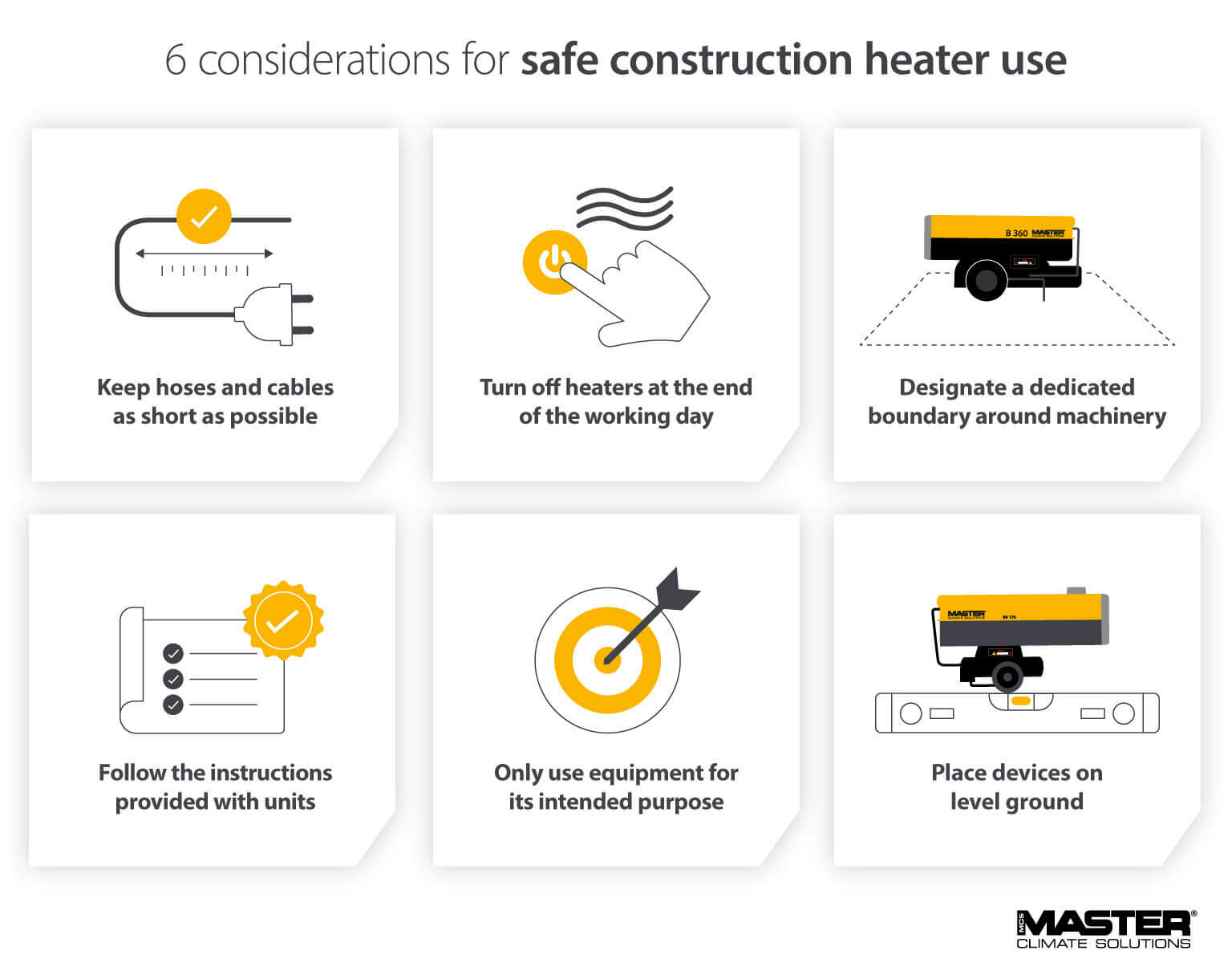
Keep your building site warm and safe
No matter where your construction project is or when works are being carried out, almost every site can be susceptible to cold weather and excess moisture in building materials.
To keep construction materials dry, teams warm and timelines on track, it is important to choose temporary heaters you and your team can depend on.
As well as over 70 years of experience, Master has an expansive range of quality construction heaters for almost every scenario or project, indoors and out.
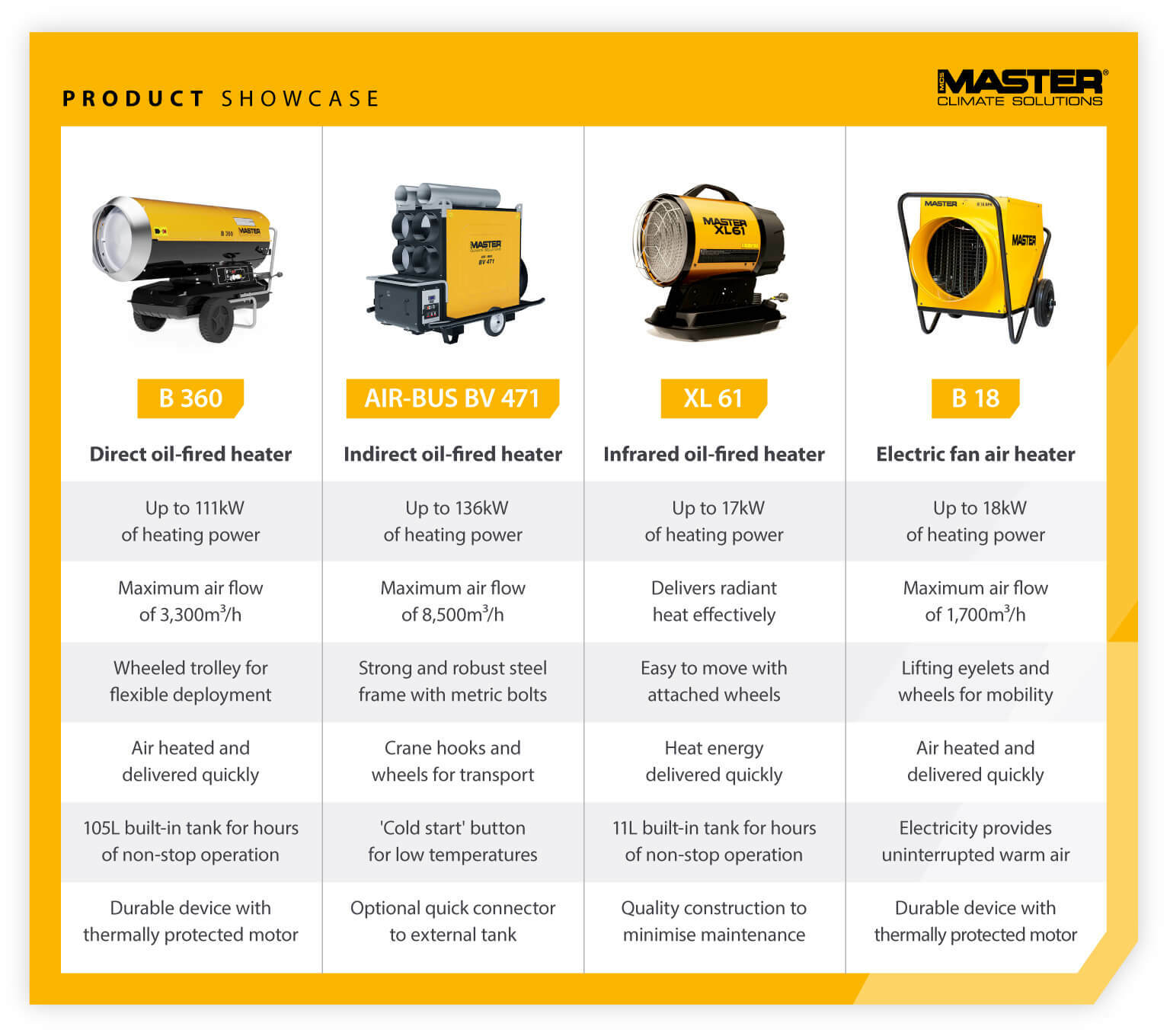
All of our heating units are designed and engineered in Europe by our experienced team, utilising durable, high-quality components to withstand the day-to-day rigours of building sites.
As well as this, all Master products are backed by our exceptional support network. That means spares, expertise and technical support are only ever a phone call away. Additionally, our full lineup is covered by our exceptional three-year warranty.
We understand that fuel, whether that be diesel or electric, comes with a cost. That is why all of our heating devices are highly efficient and effective. Furthermore, as part of our journey toward a more sustainable future, we continue to push forward in developing BioFuel heater technology that is better for the environment.
Ultimately, every construction project is unique, and there is no ‘one size fits all’ solution to heating. To learn more about our construction and building trade solutions and how they can benefit you, get in touch using the form below.
Related products
Featured insights

Explore how the technology works and why it is beneficial for fleet owners and event companies.
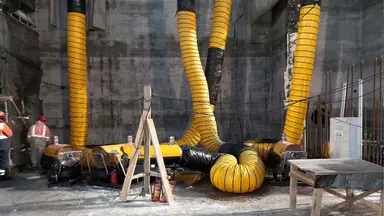
Discover how to choose the most appropriate heating solution for your construction project.
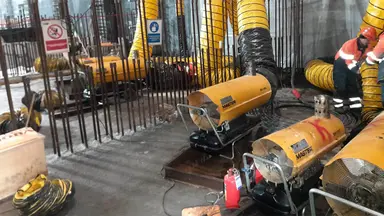
Become the go-to supplier for construction and water damage restoration
Need help with choosing the right solution? Our team of over 100 climate control experts can assist.
You can also reach out or join the discussion on our Social Media. Check out our LinkedIn page.
